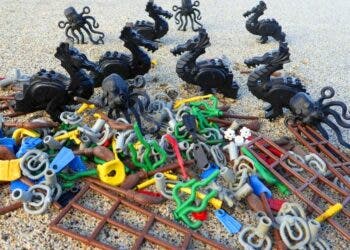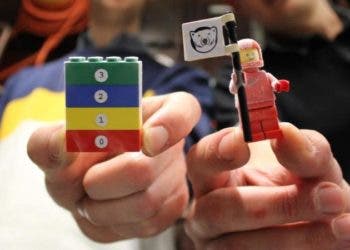
In a new study worthy of the Ig Nobel Prize, a team of pediatricians volunteered to swallow LEGO pieces to see how long it takes to gently expel them out. Suffice to say that the “toy object quickly passes through adult subjects with no complications,” the researchers concluded. The study published in The Journal of Pediatrics and Child Health is by no means an example of hard science but many patients worried about their children accidentally swallowing plastic toys will find the results valuable, nevertheless.
“We know that coins are the most commonly swallowed foreign object in the pediatric population and there is a lot of data surrounding transit time. The second most commonly swallowed objects are small toys but there is very little data out there. We wanted to know how long it would take for a small piece of plastic toy, in this case a Lego head, to pass through,” the researchers wrote.
The study involved six doctors associated with the pediatric medical blog Don’t Forget the Bubbles. The participants first recorded their bowel habits before ingesting the object of the study (a LEGO head), which enabled them to establish a Stool Hardness and Transit (SHAT) score. They then recorded how long it took for the LEGO toy to exit through the stool, measured by the Found and Retrieved Time (FART) score. Yes, these researchers certainly had their fun.
On average, it took 1.71 days for the researchers to retrieve the LEGO toys from their stool. Writing in their new study, the authors described various retrieval methods from squishing the contents of a bag filled with poop to sifting through the stool with chopsticks. One of the researchers wasn’t able to retrieve his ingested LEGO toy, which means he may have missed it during a flush. Alternatively, the missing toy might lurk in the doctor’s bowels for years and years, the authors joked. “Perhaps one day many years from now, a gastroenterologist performing a colonoscopy will find it staring back at him,” they wrote.
A child will likely see a different exit time, as the length of their intestines differs quite a bit from adults. Another study limitation is the small sample size. In any event, this was never meant to be a very serious study, but rather a fun experiment in the run-up to Xmas, the authors said. But although it may be too much to draw conclusions for the “the entire population of Lego swallowers,” the researchers said that the findings will at least ease the worries of some parents.
“This will reassure parents, and the authors advocate that no parent should be expected to search through their child’s feces to prove object retrieval,” the researchers said.






